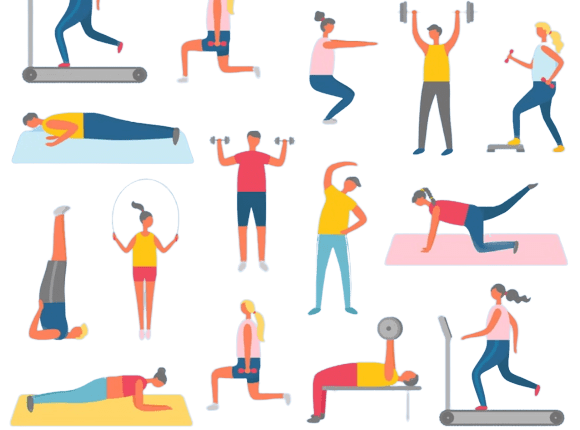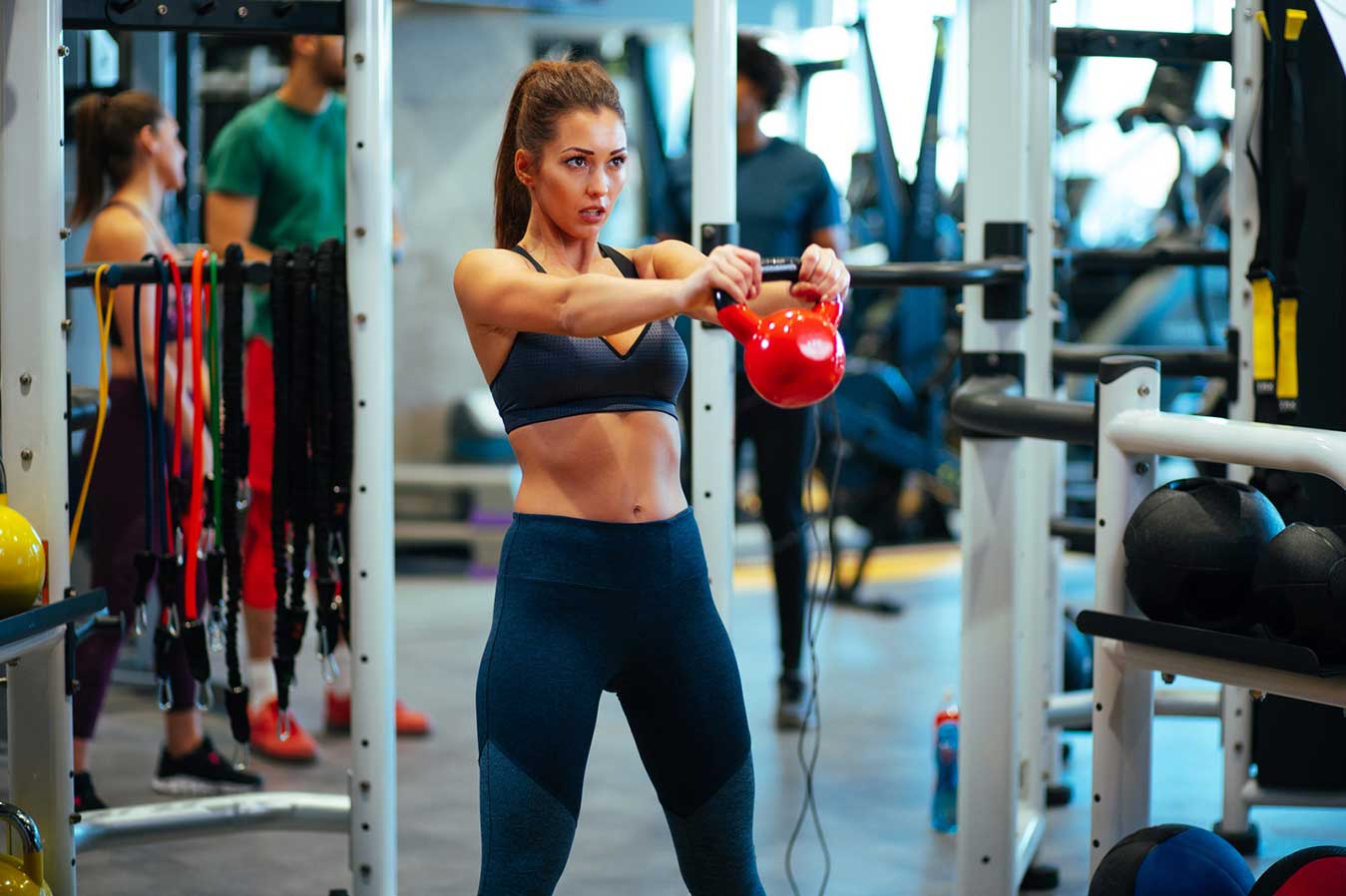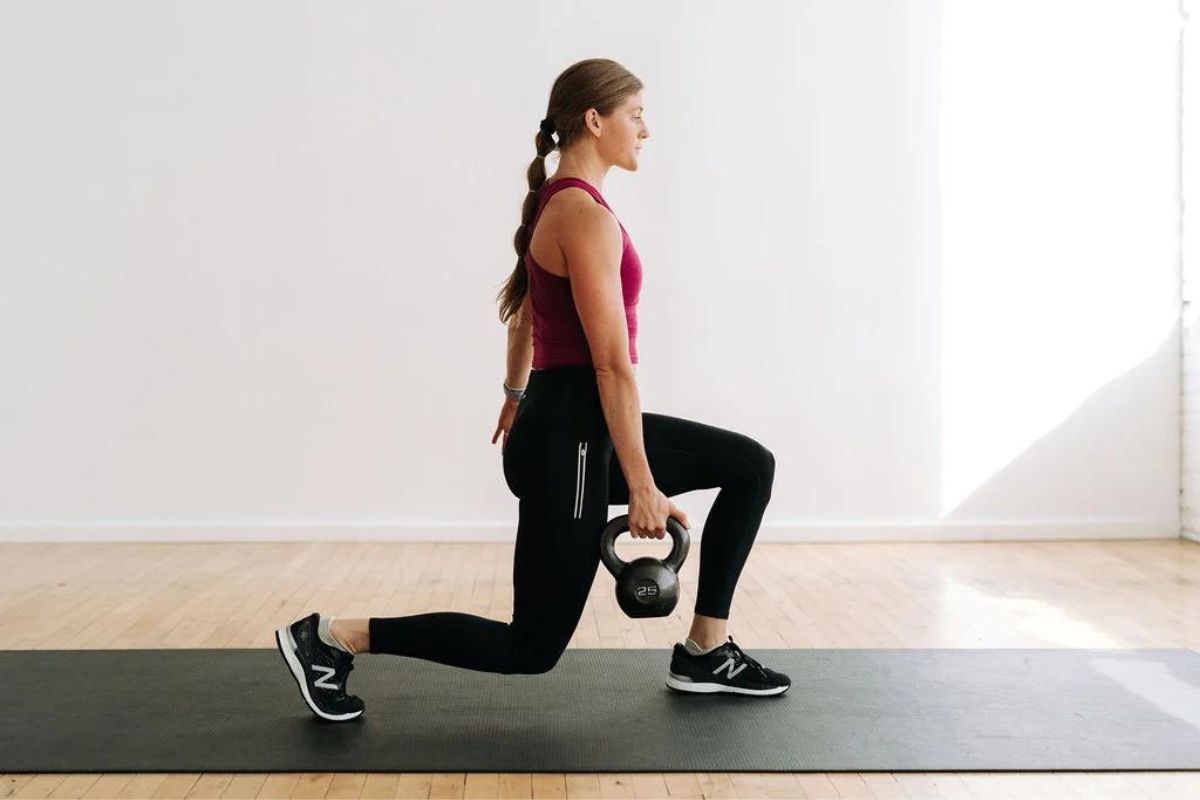Kettlebell Workout for Runners: 3 Benefits + 7-Day Workout
Are you a runner looking to get stronger and improve your performance? Did you know that a kettlebell workout for runners has been proven to provide numerous benefits? In this article, we will explore the many advantages of doing kettlebells and running training, such as increased strength, improved endurance, and weight loss.
We will also discuss how to choose the right kettlebell weight for training and guide you through an effective, time-efficient plan with the best kettlebell exercises for trail or road running.
Get ready to take your fitness up a notch!
Why is Kettlebell Training Beneficial for Runners?
Kettlebell workouts are a great way to build strength and improve your running performance. Incorporating exercises like goblet squats, kettlebell swings, and Turkish get-ups can help you develop a stronger core, improve your balance, and increase your power output.
Why Should a Runner Do Strength Training?
There are three main types of strength training exercises that runners should focus on: bodyweight training, weight training, and plyometrics training. Let’s take a closer look at these categories:

Bodyweight Training
Bodyweight training is an effective and popular approach for runners looking to increase their overall strength. It involves exercises where bodyweight or gravity is used as the primary form of resistance, such as squats, lunges, and push-ups.
These types of exercises are beneficial for building both leg muscle strength and endurance, which allows a runner to focus on long-distance runs with less fatigue. Additionally, they can be performed anywhere with little or no equipment required, making them great time savers in a busy training schedule.
For runners who wish to improve muscular endurance through bodyweight training while avoiding boredom from repetitive exercises, there are several different approaches they can take.
Weight Training
Weight training for runners can provide numerous benefits, including increased speed, core power, and muscular endurance. It also helps with injury prevention and improved running economy. Additionally, weight training is an effective way of maintaining your overall health by developing strength in your muscles and bones while also improving blood circulation.
Pro Tip:
Resistance training comes in several forms, ranging from free weights (such as dumbbells or barbells) to kettlebell workouts, which are ideal because they are more dynamic than machines that lock you into a specific range of motion.
Kettlebell exercises have become increasingly popular for runners, since they can help with goals like boosting strength gains, improving endurance, and preventing injuries. Maximal or explosive strength training provided through movements such as box jumps and power cleans has been seen to be most beneficial for aiding performance on the track.
If used properly over a six-week period, this type of resistance training can enhance running economy even more than previously thought.
Plyometrics Training
Plyometrics training is a popular type of strength training used by runners to help improve speed, agility, power, and overall running performance. Through explosive exercises like sprints and jumps that target muscles during specific movements, plyometrics can help increase muscular force production and coordination for improved athletic performance.
In addition to improving muscle strength development, plyometrics drills are useful tools for exercise variation and enhancing aerobic capacity. Specifically designed for athletes wanting higher levels of explosiveness in their activities, plyometrics combine elements of resistance and jump training. They promote neuromuscular adaptations beneficial to running performance, such as improved stride cadence or increased knee lift during the recovery phase.
Doing regular workouts with plyometrics can aid long-distance runners in maintaining high intensity throughout their runs, helping to increase lung volume and improve endurance. However, it should be balanced with traditional forms of strength workouts, such as body weight exercises or weightlifting, which require slower speeds but focus on building endurance over extended periods.
3 Benefits of Doing Kettlebell Exercises for Runners
Kettlebell exercises are an invaluable part of a runner’s strength training routine, as they offer numerous benefits that can help improve performance and reduce the risk of injury. Let’s take a closer look at them:

1. Increased Endurance
Kettlebell exercises create muscular endurance, which is extremely important for all athletes, but especially for runners, since this will result in better endurance on the track.
2. Joint Mobility
Kettlebell workouts require precise control to engage multiple muscle groups simultaneously as momentum is generated from one exercise to another. This helps build joint strength and mobility.
Pro Tip:
Using kettlebells regularly helps runners attain cardiovascular fitness by demanding more energy output than traditional weightlifting. Furthermore, specific types of kettlebell exercises, such as swings or squeezes, can develop power and explosiveness that might make running feel easier.
3. Strong Muscles and Joints
Finally, these unique movements increase strength throughout muscle contraction ranges, adding balance between strong and weak muscles, helping prevent recurrent injuries while still pushing body limits safely. Depending on your goals as a runner, there are numerous ways you can leverage kettlebell training into your routine. Incorporating movements like hamstring curls with goblet squats or thrusters with shoulder presses during dynamic sets not only increases calorie burn, but also strengthens layers around ligaments for sustainable gains at peak speeds.

How to Choose the Right Kettlebell Weight for Runners
When selecting a kettlebell to use for working out, runners should consider their gender, experience level, and the specific exercises they plan on doing. Generally speaking, male beginners should start with a weight between 26 lbs to 53 lbs, while female beginners normally go with a kettlebell between 18 lbs to 35 lbs.
It can be helpful for women to use a weight that allows them to perform deadlifts comfortably and with proper form. When it comes to kettlebell swings, men often start with a 35 lb kettlebell, while women typically go with 25 lbs.
For half-kneeling shoulder exercises, lighter weights are recommended. Male athletes should use between 12 lb to 26 lb kettlebells, while women should choose 8-16 lbs.
The ideal starting weight also depends on the runner’s current strength and conditioning levels, as well as any underlying injuries or physical limitations they may have. All of these factors must be taken into account when choosing an appropriate bell.
Beginners should start off with a manageable weight and gradually increase it only once proper technique is mastered and adequate strength has been gained. Achieving such progress is key in realizing results faster when using kettlebells during running training sessions. Make sure you assess your level cautiously before proceeding further.
Subscribe to Our Running Newsletter!
Get free running tips from renowned professional athletes and discounts from top-notch brands.
3 Best Kettlebell Exercises for Runners to Improve Results
1. Rear Lunge
The rear lunge is an excellent exercise for strengthening the lower body muscles and improving balance and stability. Begin by standing tall with your feet shoulder-width apart, holding a kettlebell in front of you.
Step back with one foot, creating a reversed step forward position while keeping the heels flat on the floor. Bend both knees so that your left thigh (front leg) becomes parallel to the floor. Push through the right heel, returning to the starting point.
Repeat this movement, alternating between legs, doing three sets of eight repetitions on each side.

2. Single-Leg Deadlift
This kettlebell training for runners targets the hamstrings, glutes, and core muscles, working towards improved running performance and reducing the potential risk of injuries. Standing straight up holding a kettlebell in one hand between your thighs (palm facing inner thigh), shift all of your weight onto the left leg, lifting the right leg off the ground and extending the knee slightly.
Hinge at the hip towards the ground, leaning the torso forward while extending the opposite arm straight out from the shoulder, reaching ahead for balance until fully extended toward the ground (like the top half of a pushup position). Switch arms as you swap sides over time. Make sure not to round the spine or shoulders when performing this action.
Do three sets of eight repetitions on each side for best results.
3. Half Turkish Get-Up
This exercise works multiple core muscles, such as hips and shoulders. It also increases general strength and stability and can benefit overall running results significantly.
Start by laying flat on your back with knees bent into 90-degree angles so the tops of your feet rest securely, ensuring your hips are not raised higher than the stomach area. Hold a kettlebell handle above your chest area, supporting the weight without too much strain. Alternate sides eventually, executing a full set. Do about five reps per arm, if possible, slowly increasing up to 10 reps per session after more practice.
Ease into it gradually, instead of jumping headfirst. Pay careful attention to your form, rather than simply rushing through the exercise blindly. Do three sets of six repetitions on each side, changing mid-points throughout the exercise sequence.
7-day Training Plan with Kettlebells for Runners
Check out this comprehensive one-week training plan with kettlebells to jumpstart your strength training regimen and maximize your performance as a runner.
For runners looking to move past performance plateaus, incorporating strength training into their routine can help improve performance and decrease the risk of injury.
When creating a training plan with kettlebells for runners, it’s important to focus on exercises that target the muscles used in running. Here is a one-week daily training plan to get you started:
| Day | Workout |
|---|---|
| Monday | kettlebell swings – 4 sets of 16 reps goblet squats – 3 sets of 12 reps single-leg deadlifts – 3 sets of 12 reps |
| Tuesday | kettlebell cleans – 3 sets of 12 reps kettlebell rows – 4 sets of 8 reps kettlebell push press – 4 sets of 8 reps |
| Wednesday | Rest day |
| Thursday | kettlebell Turkish get-ups – 3 sets of 5 reps kettlebell lunges – 3 sets of 20 reps kettlebell snatches – 3 sets of 12 reps |
| Friday | kettlebell deadlifts – 3 sets of 12 reps kettlebell high pulls – 3 sets of 12 reps kettlebell Russian twists – 3 sets of 20 reps |
| Saturday | Rest day |
| Sunday | kettlebell swings – 3 sets of 16 reps goblet squats – 4 sets of 12 reps single-leg deadlifts – 3 sets of 12 reps |
Remember to start with a weight that feels comfortable and increase it gradually as you become more comfortable with these exercises.
Frequently Asked Questions About Kettlebells for Runners
Are kettlebells good for runners?
The answer is a resounding yes! Kettlebells are an effective tool for runners to develop muscular endurance, strength, and power while improving cardiovascular conditioning. Running causes stress on the body that must be counterbalanced with strength training, so mix running with kettlebells and enjoy your progress!
Is a 20-minute kettlebell workout enough?
If you’re short on time but want to get in a good workout, a 20-minute kettlebell workout can do the trick. Studies show that you can burn up to 400 calories per session and get a full-body workout. Just be sure to choose the right exercises and use the proper form to avoid injury.
Will kettlebell swings help to improve my running?
Kettlebells are an excellent option for runners looking to add a bit of extra strength and stamina to their training routines. Kettlebell swings are a great exercise for strengthening the posterior chain, which is important for improving speed and efficiency in running.
Final Thoughts on Kettlebells for Runners
Kettlebell workouts have many benefits for runners, providing them with a comprehensive and time-efficient strength training workout. Runners who include kettlebell exercises in their cross-training regimens are likely to experience improved strength gains, better endurance, reduced risk of injury, and even weight loss over time.
The combination of kettlebells and running and the power development gained from kettlebell exercises allows runners to achieve maximum benefit in a short amount of time while also enjoying increased motivation as they improve their overall fitness level.
Have you tried kettlebell workouts for better running results? Please share your experience in the comments below.
Also read:
- Ball of Foot Pain When Running
- What to Wear Running in 40 Degree Weather
- How Cold Is Too Cold to Run
- Threshold Running
- Pool Running
- Best Cold Weather Running Gloves
- Bodybuilding and Running
- Best Running Arm Sleeves
References:
- Comparison of Kettlebell Swings and Treadmill Running at Equivalent Rating of Perceived Exertion Values // The Journal of Strength & Conditioning Research: https://journals.lww.com/nsca-jscr/Fulltext/2012/05000/Comparison_of_Kettlebell_Swings_and_Treadmill.5.aspx
- Effects of Kettlebell Training on Aerobic Capacity // ResearchGate: https://www.researchgate.net/publication/273176106_Effects_of_Kettlebell_Training_on_Aerobic_Capacity
- Kettlebell training in clinical practice: a scoping review // BMC Sports Science, Medicine and Rehabilitation: https://bmcsportsscimedrehabil.biomedcentral.com/articles/10.1186/s13102-019-0130-z
- Effects of supervised high-intensity hardstyle kettlebell training on grip strength and health-related physical fitness in insufficiently active older adults: the BELL pragmatic controlled trial // PMC: https://www.ncbi.nlm.nih.gov/pmc/articles/PMC9026020/
- 7 Best Kettlebell Exercises to Include in Your Workout // Healthline: https://www.healthline.com/health/exercise-fitness/kettlebell-workout
- Comparison of Cardiorespiratory and Metabolic Responses Between Kettlebell Half Marathon and Treadmill Running at the Same Average Oxygen Consumption: A Case Study // SpringerLink: https://link.springer.com/article/10.1007/s42978-020-00084-z
- Kettlebells // WebMD: https://www.webmd.com/fitness-exercise/a-z/kettlebell-workout
If you have any questions or suggestions, you can contact us via email – [email protected]






